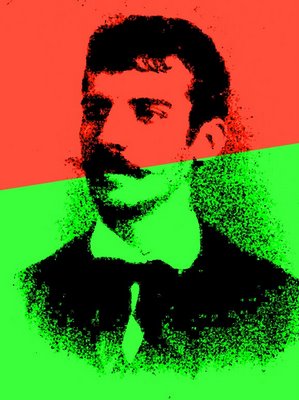3.1.4 The poetic work of Julián del Casal (1863 – 1893)

Julián del Casal was one of the most significant poets of Latin American modernism. He began to explore poetry in the last decade of his life, admittedly very brief. He also entered the journalism profession and participated in the cultural and literary exchanges that existed at the time, namely the tertulias (social gatherings), which attracted the best voices of the time, from the highest echelons of society. He published verses in various Havana magazines, eventually becoming an editor for “La Habana elegante,” which contributed to his development as a writer.
In 1890, he published “Hojas al viento” (Hojas in the Wind), a collection of poems that reflects the influence of Rubén Darío and the French poets whose works he had encountered through exchanges with other young poets who shared his lyrical vocation. Modernist glimmers already appear in this work, but he did not definitively abandon Romantic rhetoric or establish a style of his own. However, as early as 1885, he had published a poem entitled “Mis amores” (My Loves), which was of a modernist affiliation.
Without losing his romantic tone, Casal gradually stripped his poetry of idealizations. Even in the face of death, he displays a stark attitude, a pessimism, and a tragic and fatalistic conception of surprising sentimental depth, without losing his expressive restraint. The metaphorical symbols are easily identified with modernism; the formal care, the plasticity of his language, and the exaggerated cultivation of detail in many of his pieces also associate him with Parnassianism.
In Casal’s poetic work, the reader is struck by a weariness with life and an attraction to death that has been a subject of study among his exegetes; however, this attitude was not entirely authentic and was influenced by his readings and the culture of the time. What does seem to be a more certain foundation is alienation, or rather, the tendency to escape from a distorting reality, whether through art or, ultimately, death.
Casal did not avoid descriptions of nature; however, strictly speaking, he was not descriptive, nor did he express his feelings through changes in landscape or the fluctuations of the weather; rather, he substituted natural elements with his own mental conception of nature. In the field of religion, his early skepticism is evident, as is how it would lead him to a spiritual uprooting, in which inquiries would remain unanswered or with answers that increased his tormented uncertainty.
It is significant that the selections from Casal’s poetic work are sometimes quite different, heavily influenced by the prevailing aesthetic at the time of the selection. Many anthologists agree on the poem “Nihilism,” from which some stanzas are offered:
“Ineffable voice that reaches my room
in the midst of the shadows of the night,
for dragging me towards the difficult life
with the sweet cadences of reproach.
I hear it vibrate in my ears,
like at the foot of a fragrant vine
the chirping coming from the nests
indifferently listens to the fierce wound.
(…)
I only feel the desire to annihilate myself.
or to live in my eternal poverty
with my faithful companion, discontent,
and my pale bride, sadness.”
Casal’s poetic work has significantly influenced the development of poetry in later periods and has therefore been explored in its various aspects. In 1999, some of his most significant studies were published under the title “El sol en la nieve: Julián del Casal,” which also includes poems dedicated to him by José Lezama Lima and Raúl Hernández Novás.
Lezama’s “Ode to Julián del Casal,” published on the poet’s centenary, in addition to the typical Lezamaian hermeticism, reveals that the poet and his metaphors figured strongly in his poetic universe. The poem culminates with these lines (note that the expression “I only feel the desire to annihilate myself” is from the aforementioned poem “Nihilism,” thus increasing the intertextual connections):
“The Death of Baudelaire, stammering
incessantly: Holy name, holy name,
has the same quality as your death,
Having lived like a dolphin dead from sleep,
you managed to die laughing.
Your death could have influenced Baudelaire.
He who among us said:
I only feel the desire to annihilate myself,
was covered by laughter like lava.
In those routines, covered by death,
Now the cigarette that was burning between your fingers reappears,
the spark with which you descended
to the slow darkness of the frozen terrace.
Let him turn around, he’s already looking at us,
What company the wandering spark of its wandering green,
“half plum and half pineapple lacquered on the forehead”








